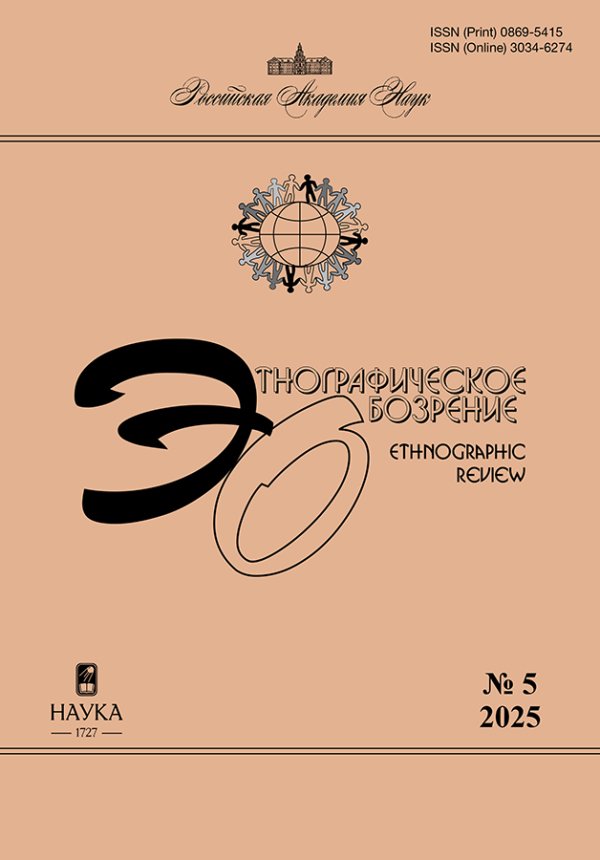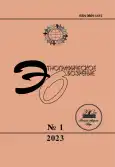Туризм на археологических местах среднего Зауралья: переосмысление статуса ландшафта и режимы наследия
- Авторы: Корандей Ф.С1, Агапов М.Г1
-
Учреждения:
- Тюменский государственный университет
- Выпуск: № 1 (2023)
- Страницы: 175-198
- Раздел: Статьи
- URL: https://journals.rcsi.science/0869-5415/article/view/144863
- DOI: https://doi.org/10.31857/S0869541523010116
- EDN: https://elibrary.ru/PNHBYM
- ID: 144863
Цитировать
Полный текст
Аннотация
Об авторах
Ф. С Корандей
Тюменский государственный университет
Email: f.s.korandej@utmn.ru
Тюмень, Россия
М. Г Агапов
Тюменский государственный университет
Email: m.g.agapov@utmn.ru
Тюмень, Россия
Список литературы
- Агапов М.Г., Корандей Ф.С. "Пока Сабетта достраивается…": практики спонтанной музеефикации в ландшафте ревитализации берега р. Туры в г. Тюмени // Этнографическое обозрение. 2019. № 4. С. 155-172.
- Ахатов А.Т., Бахшиев И.И., Тузбеков А.И. Роль археологических объектов в формировании новых сакральных пространств Южного Урала // Уральский исторический вестник. 2016. № 4 (53). С. 33-43.
- Белолипецкая Н.А. Заповедник Аркаим: особенности взаимоотношений музея и общества // Этнографическое обозрение. 2010. № 4. С. 69-77.
- Вохменцев М.П. Памятники неолита, энеолита и ранней бронзы в лесостепном Притоболье. Челябинск: ЦИКР Рифей, 2016.
- Давыдова А.С., Штырков С.А. "Это, говорят, ваше местное место силы": духовный туризм на Сейдозере глазами проводников по Кольскому полуострову // Антропологический форум. 2022. № 55. С. 257-296.
- Корандей Ф.С. и др. Провоцирующие ландшафты: исследования повседневных культурных ландшафтов периферии агломераций // Вестник археологии, антропологии и этнографии. 2021. № 3 (54). C. 246-256. https://doi.org/10.20874/2071-0437-2021-54-3-21
- Куприянова Е.В. Поселение Аркаим и популяризация археологии на Южном Урале (к вопросу о проблемах взаимодействия науки и массового сознания) // Этнографическое обозрение. 2014. № 5. С. 146-161.
- Маслюженко Д.Н. (отв. ред.) Святилище Савин-1 эпохи энеолита в Притоболье: антология статей. Курган: Издательство Курганского государственного университета, 2020.
- Матвеев А.В. Затерянный мир Ингальской долины. Тюмень: Тюменский дом печати, 2004.
- Матвеева Н.П., Волков Е.Н., Рябогина Н.Е. Древности Ингальской долины. Новосибирск: Наука, 2003.
- Селезнев А.Г., Селезнева И.А. Археологические памятники и новые сакральные пространства: иеротопия, хронотоп и глобальная информационная среда // Уральский исторический вестник. 2017. № 1 (54). С. 135-143.
- Селезнева И.А. Сакральный центр и внешний мир: проблемы взаимодействия // Этнографическое обозрение. 2014. № 5. С. 59-73.
- Чикунова И.Ю. Ипкульский курганный могильник (результаты раскопок 2010-2011 гг.) // AB ORIGINE: археолого-этнографический сборник. Тюмень: Издательство Тюменского государственного университета, 2017. Вып. 9. С. 79-110.
- Шнирельман В.А. Аркаим: археология, эзотерический туризм и национальная идея // Антропологический форум. 2011. № 14. С. 133-167.
- Шнирельман В.А. Места силы: конструирование сакрального пространства. Введение к дискуссии // Этнографическое обозрение. 2014. № 5. С. 3-9.
- Шнирельман В.А. Конструирование исторического наследия - случай Аркаима // Сибирские исторические исследования. 2015. № 2. С. 53-65.
- Шнирельман В.А. Археология, историческое наследие и проблемы этики // Сибирские исторические исследования. 2020. № 1. С. 97-122.
- Anand N., Gupta A., Appel Н. (eds.) The Promise of Infrastructure. Durham, London: Duke University Press, 2018.
- Atalay S. "We don't talk about Çatalhöyük, we live it": Sustainable Archaeological Practice through Community-based Participatory Research // World Archaeology. 2010. Vol. 42 (3). P. 418-429. https://doi.org/10.1080/00438243.2010.497394
- Brown M.F. Who Owns Native Culture? Cambridge, MA: Harvard University Press, 2003.
- Castaneda Q.E. The "Etnographic Turn" in Archaeology: Research Positioning and Reflexivity in Ethnographic Archaeologies // Ethnographic Archaeologies: Reflections on Stakeholders and Archaeological Practices / Ed. by Q.E. Castaneda, C.N. Matthews. Lanham, MD: Altamira Press, 2008. P. 25-62.
- Chemero A. An Outline of a Theory of Affordances // Ecological Psychology. 2003. Vol. 15 (2). P. 181-195.
- Collins-Kreiner N. Geographers and Pilgrimages: Changing Concepts in Pilgrimage Tourism Research // Tijdschrift voor Economische en Sociale Geografie. 2010. Vol. 101 (4). P. 437-448. https://doi.org/10.1111/j.1467-9663.2009.00561.x.
- Finlayson C.C. Spaces of Faith: Incorporating Emotion and Spirituality in Geographic Studies // Environment and Planning A. 2012. Vol. 44. P. 1763-1778. https://doi.org/10.1068/a44580
- Geismar Н. Anthropology and Heritage Regimes // Annual Review of Anthropology. 2015. Vol. 44. P. 71-85. https://doi.org/10.1146/annurev-anthro-102214-014217
- Gibson J.J. The Ecological Approach to Visual Perception. Boston: Houghton Mifflin, 1979.
- Harvey D. Landscape and Heritage: Trajectories and Consequences // Landscape Research. 2015. Vol. 40 (8). P. 911-924. https://doi.org/10.1080/01426397.2014.967668
- Heft H. The Social Constitution of Perceiver-Environment Reciprocity // Ecological Psychology. 2007. Vol. 19 (2). P. 85-105.
- Hodder I. Archaeological Reflexivity and the "Local" Voice // Anthropological Quarterly. 2003. Vol. 76 (1). P. 55-69.
- Hodder I. Cultural Heritage Rights: from Ownership and Descent to Justice and Well-being // Anthropological Quarterly. 2010. Vol. 83 (4). P. 861-882. https://doi.org/10.1353/anq.2010.0025
- Ingold T. The Perception of the Environment: Essays on Livelihood, Dwelling and Skill. London, New York: Routledge, 2000.
- Lantian A. et al. Stigmatized Beliefs: Conspiracy Theories, Anticipated Negative Evaluation of the Self and Fear of Social Exclusion // European Journal of Social Psychology. 2018. Vol. 48. No. 7. P. 939-954.
- Pyburn K.A. Engaged Archaeology: Whose Community? Which Public? // New Perspectives in Global Public Archaeology / Ed. by K. Okamura, A. Matsuda. New York: Springer, 2011. P. 29-41.
- Scriven P. Geographies of Pilgrimage: Meaningful Movements and Embodied Mobilities // Geography Compass. 2014. Vol. 8 (4). P. 249-261. https://doi.org/10.1111/gec3.12124
- Silberman N.A. Virtual Viewpoints: Multivocality in the Marketed Past? // Evaluating Multiple Narratives: Beyond Nationalist, Colonialist, Imperialist Archaeologies / Eds. J. Habu, C. Fawcett, and J.M. Matsunaga. New York: Springer, 2008. P. 138-143.
- Silberman N.A. Heritage Interpretation and Human Rights: Documenting Diversity, Expressing Identity, or Establishing Universal Principles? // International Journal of Heritage Studies. 2012. Vol. 18 (3). P. 1-12. https://doi.org/10.1080/13527258.2012.643910
- Silberman N.A. Discourses of Development: Narratives of Cultural Heritage as an Economic Resource // Heritage and Tourism. Place, Encounter, Engagement / Ed. by R. Staiff, R. Bushell, S. Watson. London: Routledge, 2013. P. 213-225.
- Silverman H. Contested Cultural Heritage: A Selective Historiography // Contested Cultural Heritage: Religion, Nationalism, Erasure, and Exclusion in a Global World / Ed. by H. Silverman. New York: Springer, 2011. P. 1-49. https://doi.org/10.1007/978-1-4419-7305-4_1
- Stoffregen T.A. Affordances as Properties of the Animal-Environment System // Ecological Psychology. 2003. Vol. 15 (2). P. 115-134.
- Tilley C., Cameron-Daum K. An Anthropology of Landscape: The Extraordinary in the Ordinary. London: University College, 2017.
Дополнительные файлы










